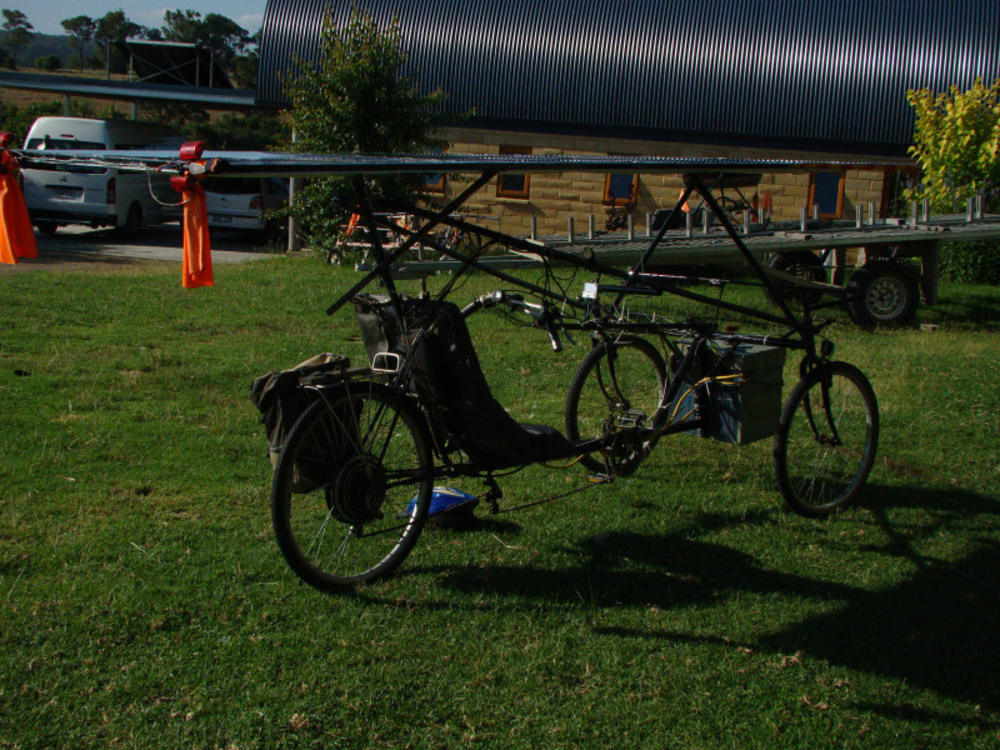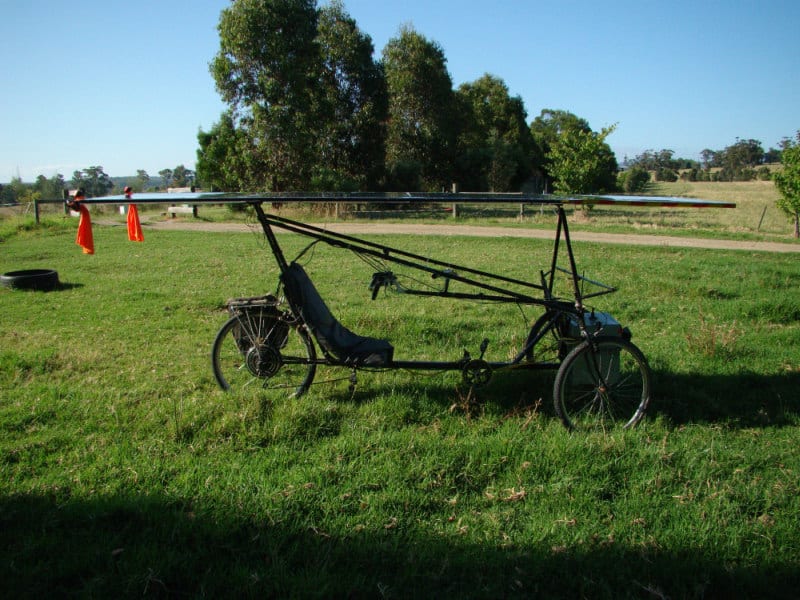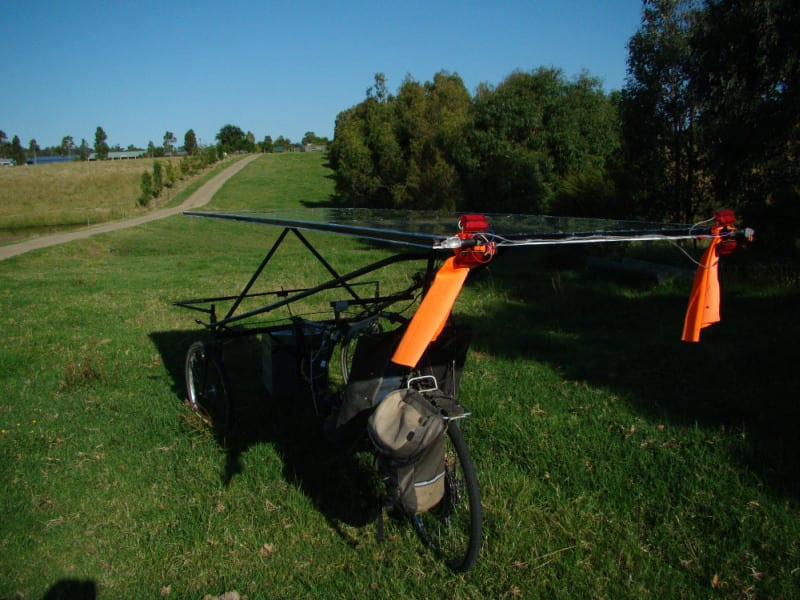A solar/human powerd tricycle for personal transport and light cargo that, depending on motor size (easily varied) can eather be ridden legally as a bicycle or registered as a motorcycle. Range with no sun is between 40 and 130 km and maximum speed is 25 to 60 km, with high power motors (easily available) max speed could be up to 90 kmph. The enegy consumption is (at 50kmph) approximately equivalent to 400km per liter of petrol, and that comes from the sun.
Other than the obvious environmental advantage this trike has over any fossil fuel powered transport, it is much cheaper initially and long term to run than either a car or motorbike. It can even be cheaper to run than a pushbike. It also has 2 independent drive systems (electric and human). This means if one breaks down the chances are the other will still work fine.
When compared to a bike the trikes keep most of the rain off, the rider doesn't get sweaty (unless they want to). The rider sits on a big seat with a backrest (much more comfortable) and doesn't have to worry about stabilizing the bike. The drive train maintenance (the most time consuming and expensive part of running a bike) is also considerably reduced. The rider can also tow a much heavier trailer much faster.
In terms of advantages over a car (for short distances) this trike is easier to park, store, and repair. It keeps you healthier because of the optional exercise. If used with a bike trailer (more modifications needed) it can also carry more cargo than many cars. Leave it lying around in the sun to refuel it, and it's cheaper and more environmentally friendly.
The solar panel sits above the rider and provides weather protection for the rider. It has lights, flags and indicators attached to it which increases visability, and it acts as a crumple zone in case of a collision.
The frame of the trike is built out of bicycle parts and outher recycled steel, reducing the carbon footprint and making construction materials cheap and easilly accessible. It also has the advantage of making replacement/upgrade parts being very accessible.
The motor is a standard bicycle hub motor, very reliable, efficent, quiet and easy to replace.
Manufacturing is relativly cheap initially and long term. The prototype was built in a backyard shed with only basic welding and soldering equipment. Using Australian labor in small scale production the trikes could retail between $3000 and $5000 depending on battery/panel size and motor size.
Like this entry?
-
About the Entrant
- Name:Sampson Mitchell
- Type of entry:individual
- Patent status:none








